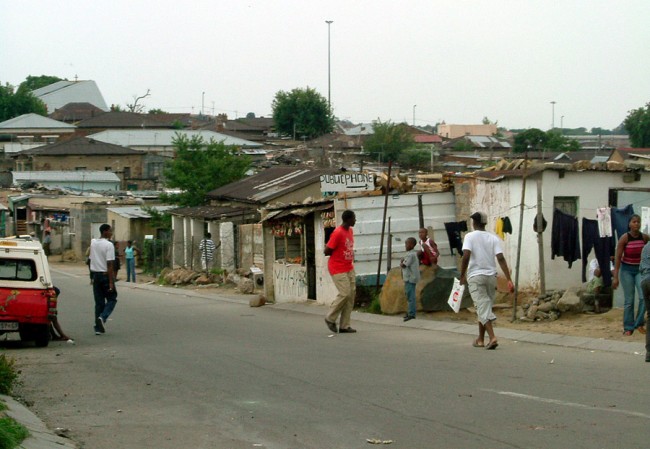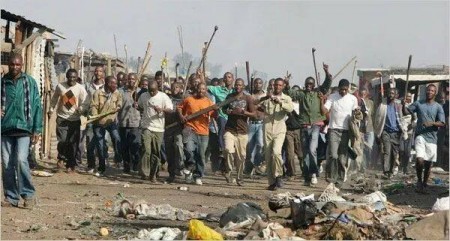In the early 1960s,
the Afrikaans comics Kleinspan and Jongspan carried the series of Tarzan (and
Apes) comic strips. During 1912 Edgar Rice
Burroughs created Tarzan a fictional character. The setting for the
comic strip stems from the dark, dense
jungles of West Africa and a primitive African tribe. One series mentioned an
invasion coming into Africa from Mongolia. This could be far-fetched, it is not.
At the end of the 1800s, the Rinderpest cattle disease swept
down Africa and wiped out most of the Xhosa
cattle herds in the process. A Xhosa Sangoma told the Xhosa tribes to kill all the cattle
to appease the spirits. The killing of
the cattle would drive the British into
the sea, and that will save the Xhosa.
It did not. Driven to starvation the Xhosa people had to work in the mines in order to
get money to buy food. Wrong information was given to this sangoma to achieve a predicted end. Cheap labor for the mines! Who gave this information?
The Rinderpest came from Mongolia and Steppes of Russia. Who
brought it to Africa? It was a Swiss
veterinary doctor, Dr. Arnold Theiler, at Allerton State Laboratory, Pietermaritzburg,
who found the right vaccination and cure, which stopped the Rinderpest. The authorities are to-be-had to have oxen to pull
the ox wagons for transport riders, taking goods to the Transvaal mines. In
addition, oxen were used to pull the guns fighting the Boers.
The veterinary departments were linked between all British
Colonial in Africa, such as the Boer Republics, two Rhodesia, Nyasaland and Kenya, and the Allerton State vets got the
right remedy.
Allereton, veterinary pioneers – Natalia,
December 2014 – Link
The Ethiopian Emperor
Haile Selassie was leading Africa in
terrorism by saying over Radio Abbis Ababa, "Africa for the Africans"
in order to stir up the African masses to chase all Europeans out of Africa. An Italian girl, born and grew up in Ethiopia,
witnessed these events and told to a South African Farmer.
At about 10 o'clock in the
morning, the (Ethiopian) native women arrived at the place of execution
outside Addis Ababa. Then the prisoners, to be
executed, were brought to the place of execution on an animal drawn
cart. Four gallows were ready. At 12 noon, the Emperor arrives riding his white horse. The first, to be hanged, is led to the gallows. The
noose is placed around his neck. The reason to be hung and sentence is read to the damned. The rope is long, and he
is ready to be swung. He curses the Emperor and the damned turned, made to be strangled. He dances at the
end of the rope for minutes before he dies. All the women witnessing the scene
ululate on the side of the hill looking over the
hanging. When all are hanged and dead, Haile
Selassie rides back to his palace in
Addis Ababa. In Addis Ababa, the peasants
have rights.
A person drives his car carefully through the streets.
Suddenly someone goes in front of the car and is run over. The police officer
comes in the scene. While asking
questions, the police officer produces a long thin knife and skewers the driver
through his body killing him. Cars and vehicles are foreigners to Ethiopia!
Just before Ethiopia experienced
a severe drought and famine was the order of the day. Until that time, the food production was based on the
Feudal system. A few owned the agriculture land and peasants worked on the land
and the nation was fed.
Miriam Mengistu was an army officer in Haile Selassie's administration he attended officers' college in the United States
of America, the same that South African
Magnus Malan attended. Miriam Mengistu converted to Marxism; this was NOT what
Haile Selassie intended.
During the Ethiopian famine crisis,
Miriam Mengistu caught Haile Selassie in
his Palace and with his own hands strangled Haile Selassie. In addition, hid him behind the throne and told the
nation that no one knew where the Emperor was. Obviously, he would have stunk
and the secret became known.
As the famine, progressed Churches in Britain put up posters inside Churches
explaining the plight of the starving Ethiopians. People willingly paid their
contributions. Millions of Pound Sterling went to Ethiopia to feed the starving
masses. Miriam Mengistu and his cronies received his money, and in drinking scenes, got drunk and drank all the money away.
The masses got nothing. Then the USA
and Arabs issued an arrest warrant for Mengistu. He fled to Zimbabwe and became
Robert Mugabe's adviser on land issues.
In April 2000, David Stevens was the first White farmer to
be brutally killed by ZANU/PF and police under Mugabe's new land reform program. Miriam Mengistu was the
reason why David Stevens was killed. David's
widow, Maria, went to New York and opened murder charges against Robert Mugabe.
The USA and UN did nothing to bring Mugabe to trial.
Prof. Ian Scoones from the University
of Sussex, England, is a Johnny come lately to
the scene of feeding Africa. What happens after his contribution is
foreign investors invest in African land that the previous owners have been dispossessed? The masses, peasants and the poor get no food from agriculture lands that
have been taken over by foreign investors, whether American, British, European
or Chinese. This happened in Ethiopia, Libya and in Zimbabwe.
Today, Al-Qaeda, Al-Shabaab,
Boko Haram, Egyptian Islamic Jihad and the Lord’s Resistance Army are dangerous
terrorist groups operating in Africa. There
are other terrorist groups operating in
Africa and the world. The terrorism in Africa does not stay in Africa; it
trickles over to the rest of the World and
remains an endless threat to peace and security.
Islamic extremists have found abundant ground to flourish in
Africa and rapidly spreading their network of terrorism globally. Some of the
bloodiest terror actions frequently happen in
Nigeria, Algeria, Mali, Tunisia, Somalia and Kenya. The easy access of
infiltrating across country borders and the corrupt governments are easy
targets for terrorists to expand their operations. African governments often
neglect to train army personnel and the
underequipped armies have no mechanism for
defending the vulnerable to the terrorist
strikes. Almost every country in Africa receives US military assistance.
The vast lawless spaces in Africa are far away from US
military bases and this would prove to be difficult to mount effective counter-terror initiatives. The terrorist's groups recruit foreign jihad
fighters, often using young children to carry out murderous tasks.
Boko Haram is gaining control of Nigeria and is fighting to
establish a pure Islamic state based on the Sharia law. Their ruthless attacks
targeting schools, churches and army bases have a daunting effect on the government army who remain
helpless against the cold-blooded killings. The army is under-equipped; weapons
are old-fashioned and often hazardous proving that Boko Haram will ultimately
win the terror war. Boko Haram are trying to connect with Al-Qaeda-linked groups with the sole intention
of expanding the Islamic influence in North Africa,
Drug trafficking, ivory smuggling,
and piracy are some of the actions used by terrorist groups to finance the
continued terror attacks in Africa. Corrupt governments have lost control over
the forceful and rapid rise in terrorism.






.jpg)